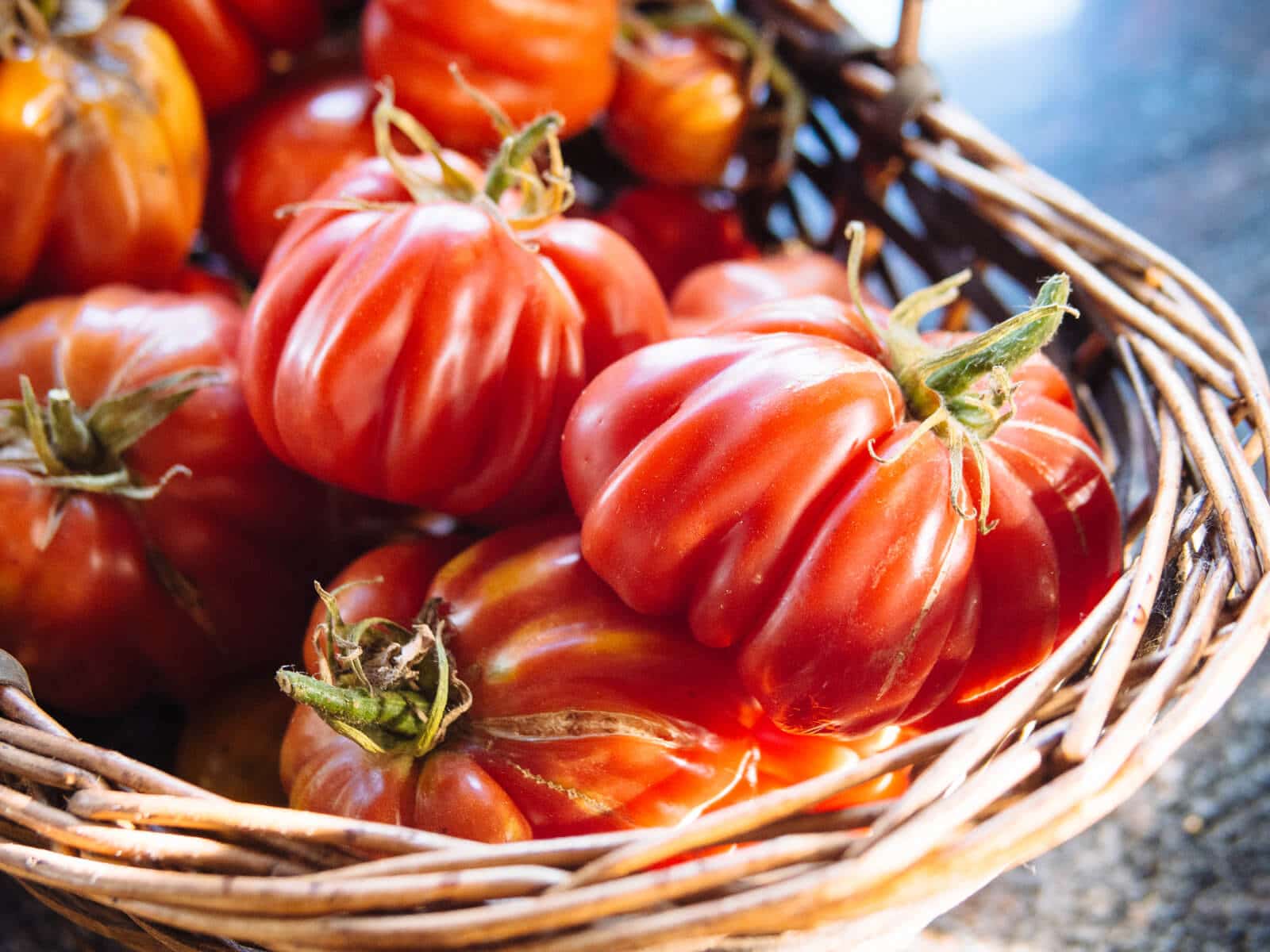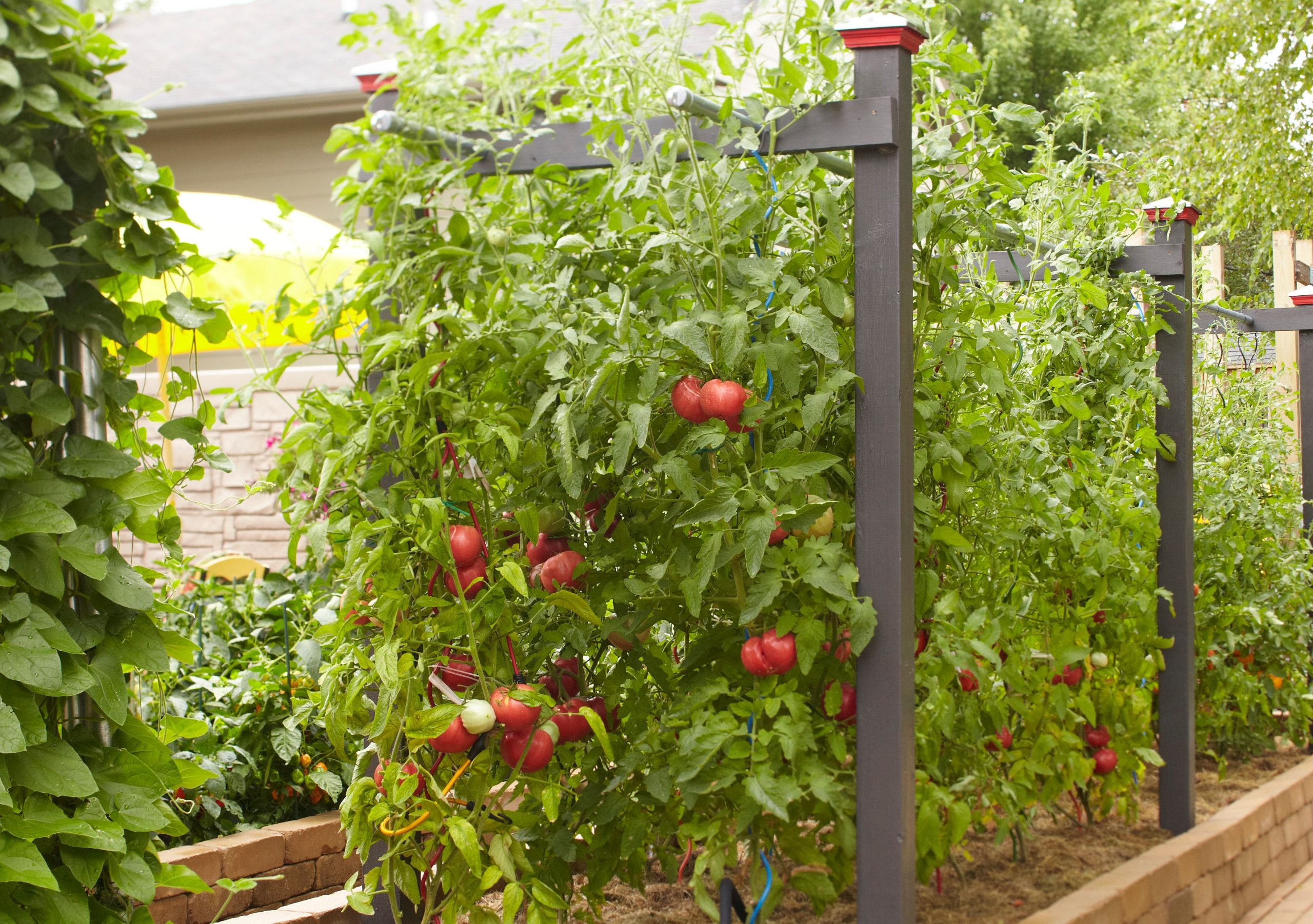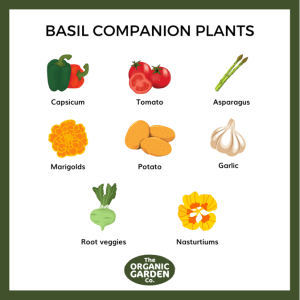10 Tips for How to Stake Tomatoes to Get a Better Harvest Proper staking improves air circulation and prevents diseases. It also supports plant growth and increases fruit production.
Tomatoes are a favorite among home gardeners, but they require proper support to thrive. Staking tomatoes is essential to maximize yield and ensure healthy plants. Without adequate support, tomato plants can become overburdened with fruit, leading to broken stems and reduced harvest.
Staked plants receive better sunlight exposure and airflow, reducing the risk of fungal infections. This practice also keeps fruits off the ground, preventing rot and pest issues. Whether you’re a novice gardener or an experienced green thumb, these tips will help you stake your tomatoes effectively, ensuring a bountiful and healthy harvest.

Credit: gardenbetty.com
Choosing The Right Stakes
Staking tomatoes is essential for a healthy and bountiful harvest. The right stakes provide support and keep the plants upright. This section will guide you through selecting the best stakes for your tomato plants.
Material Options
Tomato stakes come in various materials. Each has its own benefits. Here are some popular choices:
- Wood: Wood stakes are sturdy and easy to find. They blend well in gardens.
- Metal: Metal stakes are strong and durable. They can withstand harsh weather.
- Bamboo: Bamboo stakes are lightweight and eco-friendly. They are also quite sturdy.
- Plastic: Plastic stakes are lightweight and resistant to rot. They are also easy to clean.
Length And Thickness
The length and thickness of your stakes matter. They should match the needs of your tomato plants.
Length: Stakes should be tall enough to support the full height of your plants. A good rule of thumb is to use stakes that are 6-8 feet tall. This ensures they provide adequate support as the plants grow.
Thickness: Thicker stakes provide better support. Choose stakes that are at least 1 inch in diameter. This will help them hold up against wind and the weight of the tomatoes.
| Material | Pros | Cons |
|---|---|---|
| Wood | Sturdy, Blends well | Can rot over time |
| Metal | Strong, Durable | Can rust |
| Bamboo | Lightweight, Eco-friendly | Can break if not thick enough |
| Plastic | Lightweight, Rot-resistant | Less sturdy than metal or wood |
In summary, choose stakes that fit your garden’s needs. Consider the type of tomatoes you are growing. Happy staking!

Credit: www.gardenersworld.com
When To Stake Your Tomatoes
Knowing the right time to stake your tomatoes is crucial for a bountiful harvest. Staking your tomatoes at the proper stages ensures they grow healthy and strong. Let’s explore the best times to stake your tomatoes under the following subheadings.
Planting Time
Stake your tomatoes when you first plant them. This gives the plants support from the start. Insert the stakes into the soil near the plants. Be careful not to damage the roots. You can use wooden stakes, metal stakes, or even bamboo poles. This early support helps the plants grow upright and reduces the risk of bending.
Early Growth Stage
Check your tomato plants during the early growth stage. You might need to adjust the stakes. As the plants grow, tie them gently to the stakes. Use soft ties like cloth strips or garden twine. This prevents the stems from breaking. Make sure the ties are loose enough to allow for growth. Regularly check and adjust the ties as the plants grow taller. This continual support ensures the plants stay upright and healthy.
Proper Placement Of Stakes
Proper placement of stakes is crucial for a healthy tomato harvest. This ensures that your plants grow straight and strong. Staking tomatoes also helps prevent diseases and pests. Let’s break down the best practices for staking tomatoes.
Spacing Tips
Tomato plants need enough space to thrive. Place each stake about 18 inches apart. This gives the plants room to grow and spread. Crowded plants can lead to poor air circulation. Poor air flow can cause diseases.
Here’s a simple table for spacing tips:
| Plant Type | Spacing Between Stakes |
|---|---|
| Cherry Tomatoes | 12 inches |
| Beefsteak Tomatoes | 24 inches |
Depth Considerations
The depth of the stake is important. Push each stake at least 12 inches into the soil. This keeps the stake stable in windy conditions. A deep stake supports the plant well.
Follow these steps for proper depth:
- Choose a sturdy stake, about 6 feet tall.
- Push the stake 12 inches into the soil.
- Ensure the stake stands upright and firm.
Deep stakes prevent plants from falling over. This helps the plant get more sunlight and air.
Tying Techniques
Properly tying your tomato plants ensures they grow upright and strong. This helps in getting a better harvest. Different methods suit different needs. Learn the right techniques to ensure healthy plants and abundant fruit.
Types Of Ties
Choosing the right type of tie is crucial for plant health. Here are some common options:
- Twine: Natural and biodegradable. Twine is gentle on plants.
- Velcro Strips: Reusable and adjustable. Velcro strips are easy to use.
- Clips: Quick and efficient. Clips hold stems without damage.
- Soft String: Ideal for delicate stems. Soft string prevents cuts.
Securing The Plant
Knowing how to secure your tomato plants is essential. Follow these simple steps:
- Place the stake in the soil. Ensure it’s 6 inches deep.
- Choose a tie from the list above.
- Wrap the tie around the plant stem and the stake.
- Ensure the tie is snug but not tight.
- Leave some space for the stem to grow.
Repeat the steps as the plant grows taller. Regular checks ensure the plant remains secure. Proper tying helps in preventing damage and promoting growth.
| Type of Tie | Best Use | Pros | Cons |
|---|---|---|---|
| Twine | General use | Biodegradable, gentle | May degrade quickly |
| Velcro Strips | Reusable ties | Adjustable, easy to use | Can be costly |
| Clips | Quick securing | Efficient, no damage | Not adjustable |
| Soft String | Delicate stems | Prevents cuts | Can be less durable |
Supporting Heavy Branches
Supporting heavy branches is crucial for a bountiful tomato harvest. Without proper support, branches can break under the weight of the fruit. Here are some tips for ensuring your tomato plants stay upright and healthy.
Additional Support
Heavy branches need extra help to stay upright. Use sturdy stakes or cages. You can tie the branches to these supports using soft ties. Ensure the ties are not too tight to avoid damaging the plant.
Another option is to use a trellis. A trellis provides excellent support for sprawling branches. You can guide the branches through the trellis as they grow. This method keeps the plant off the ground and reduces the risk of disease.
Preventing Breakage
Preventing branch breakage is essential for plant health. Inspect your tomato plants regularly. Look for branches that are bending or sagging.
- Use soft ties to secure these branches to a stake or cage.
- Prune any branches that appear weak or damaged.
- Removing excess foliage can help reduce weight on the branches.
By taking these steps, you can keep your plants strong and productive. Remember, a healthy plant produces more tomatoes!
:strip_icc()/tips-for-growing-tomato-seedlings-GettyImages-914589220-ba39b0c0140f4626b1448c98205ab030.jpg)
Credit: www.bhg.com
Regular Maintenance
Regular maintenance is crucial for healthy tomato plants. It ensures they stay strong and productive. Two main tasks in this process are adjusting ties and inspecting for damage. These tasks help keep your plants growing well.
Adjusting Ties
Tomato plants grow quickly. You need to adjust the ties often. This prevents the plants from getting damaged. Make sure the ties are not too tight. Tight ties can harm the stems. Use soft materials for tying, like cloth or garden tape. This is gentle on the plants.
- Check ties every few days.
- Loosen ties if they are too tight.
- Use soft materials for ties.
Inspecting For Damage
Regularly inspect your tomato plants for damage. Look for broken stems or leaves. Also, check for pests or diseases. Early detection helps prevent bigger problems. Remove any damaged parts of the plant. This keeps the rest of the plant healthy.
| Task | Frequency |
|---|---|
| Check for broken stems | Weekly |
| Look for pests | Daily |
| Remove damaged parts | As needed |
Healthy tomato plants give better harvests. Regular maintenance, like adjusting ties and inspecting for damage, is key. Keep your plants in top shape and enjoy a bountiful tomato crop.
Dealing With Pests
Staking tomatoes can be a rewarding task, but pests can ruin your harvest. Knowing how to deal with pests is crucial for a healthy tomato crop. Here are some effective strategies to keep pests at bay.
Common Pests
Tomato plants attract various pests that can damage your crop. Below are some of the most common ones:
- Aphids: Tiny insects that suck sap from the leaves.
- Tomato Hornworms: Large green caterpillars that eat leaves and fruits.
- Whiteflies: Small white insects that feed on the underside of leaves.
- Spider Mites: Tiny pests that cause yellow spots on leaves.
- Cutworms: Larvae that cut young plants at the soil level.
Natural Remedies
Using natural remedies can help control pests without harming your plants. Here are some effective methods:
- Neem Oil: Spray neem oil on leaves to repel pests.
- Garlic Spray: Mix garlic and water, then spray on plants.
- Companion Planting: Plant basil or marigold near tomatoes to deter pests.
- Soap Spray: Mix dish soap with water and spray on infected areas.
- Handpicking: Remove larger pests like hornworms by hand.
Implementing these tips can significantly reduce the pest problem in your tomato garden.
Maximizing Sunlight Exposure
Maximizing sunlight exposure is key to getting a better tomato harvest. Tomatoes need plenty of sun to grow big and juicy. Follow these tips to ensure your plants get the light they need.
Optimal Positioning
Position your tomato plants in a spot with full sunlight. Tomatoes need at least 6-8 hours of sun daily. Place them where there are no tall structures or trees that cast shadows.
Ensure the rows of tomato plants run north to south. This setup lets all plants get equal sunlight throughout the day. Avoid placing plants too close together. Space them 18-24 inches apart for better light and air circulation.
Pruning For Light
Prune the lower leaves of the tomato plants. This allows more sunlight to reach the bottom of the plants. Removing the lower leaves also improves air circulation, reducing the risk of disease.
Trim any branches that block sunlight from reaching the main stem. Focus on keeping the plant open and airy. This ensures that all parts of the plant get enough sunlight. Regular pruning helps the plant use its energy to grow more tomatoes.
| Tip | Action |
|---|---|
| Full Sunlight | Place plants where they get 6-8 hours of sun |
| Spacing | Space plants 18-24 inches apart |
| Prune Lower Leaves | Remove lower leaves for better light and air |
| Trim Blocking Branches | Cut branches that block sunlight to the stem |
Following these tips will help your tomato plants thrive. Proper sunlight exposure leads to a healthier and more productive harvest.
Watering Tips
Proper watering is essential for a healthy tomato plant. It ensures that your tomatoes get the nutrients they need. Below, we explore key watering tips for staking tomatoes. This will help you achieve a bountiful harvest.
Frequency And Amount
Tomatoes need consistent watering to thrive. Water your tomatoes deeply once or twice a week. This encourages deep root growth. A good rule of thumb is to provide 1-2 inches of water each week. Use a rain gauge to measure rainfall. Adjust your watering schedule based on weather conditions. Hot, dry weather may require more frequent watering.
| Weather Condition | Watering Frequency |
|---|---|
| Hot and Dry | 2-3 times a week |
| Cool and Moist | Once a week |
Avoiding Overwatering
Overwatering can harm your tomato plants. It can lead to root rot and other diseases. Ensure the soil is well-draining. Sandy or loamy soil is best for tomatoes. Avoid watering the leaves, as this can cause fungal issues. Instead, water the base of the plant. Use a soaker hose or drip irrigation system.
- Check the soil moisture before watering.
- Insert your finger 2 inches into the soil. If it feels dry, water the plant.
- Mulch around the base to retain moisture.
- Use organic mulch like straw or wood chips.
Remember, proper watering is key to a thriving tomato plant. Follow these tips to ensure a healthy and productive garden.
Harvesting Techniques
Harvesting tomatoes correctly is crucial for a bountiful and tasty yield. The right techniques ensure you get the best flavor and texture. This section will guide you through the essential harvesting techniques.
Identifying Ripe Tomatoes
Knowing when your tomatoes are ripe is key. Look for a uniform color across the tomato. The skin should be smooth and glossy. A ripe tomato will feel slightly soft when gently squeezed.
| Color | Texture | Feel |
|---|---|---|
| Red (or the color of the variety) | Smooth and glossy | Slightly soft |
Proper Picking Methods
Picking tomatoes the right way prevents damage to the plant and fruit. Use your fingers to gently twist the tomato off the vine. You can also use pruning shears for a clean cut.
- Twist gently to avoid bruising.
- Use pruning shears if the stem is tough.
- Hold the tomato with one hand and twist the stem with the other.
Avoid pulling the tomato forcefully. This can damage the plant and other fruits.
FAQ
What Is The Best Method Of Staking Tomatoes?
The best method for staking tomatoes is using the single-stake method. Drive a sturdy stake into the ground next to each plant and tie the stems loosely to the stake as they grow. This provides strong support and maximizes air circulation, reducing disease risk.
What Makes The Best Tomato Stakes?
The best tomato stakes are sturdy, weather-resistant, and at least 6 feet tall. Use materials like wood, metal, or bamboo. Ensure they are easy to install and support heavy vines.
How Can I Improve My Tomato Harvest?
Improve your tomato harvest by ensuring proper sunlight, watering consistently, using quality soil, pruning regularly, and controlling pests.
How Do You Get The Highest Yield On Tomatoes?
To get the highest yield on tomatoes, use quality soil, provide consistent watering, ensure full sunlight, prune regularly, and use organic fertilizers.
Conclusion
Mastering tomato staking leads to a bountiful harvest. Follow these tips to support plant growth and maximize yields. Consistent care and proper staking techniques ensure healthy, productive tomato plants. Enjoy the benefits of your efforts with a vibrant, fruitful garden.
Happy gardening and may your tomatoes flourish!





